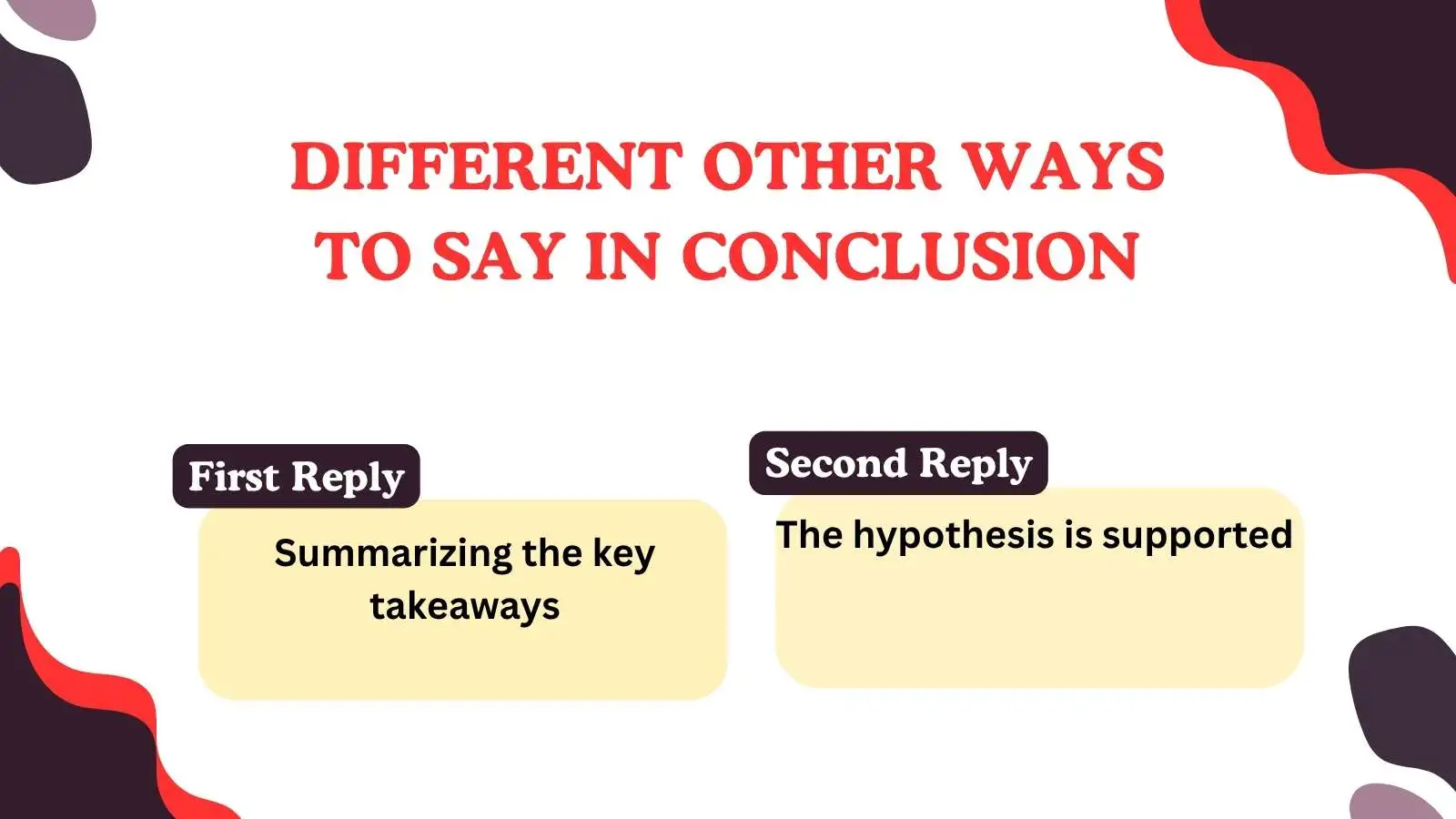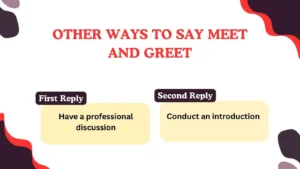When wrapping up a conversation, an essay, or even a presentation, saying “in conclusion” can feel repetitive. If you want to sound more natural, professional, or creative, there are plenty of alternatives.
Here are 220 different ways to say “in conclusion”, grouped into practical categories.
Final Thoughts and Summary Phrases
- To sum up
- To wrap things up
- In summary
- All in all
- To put it briefly
- To bring everything together
- To tie it all up
- Looking at the big picture
- The bottom line is
- To make a long story short
- When all is said and done
- In a nutshell
- To put it all in perspective
- In the grand scheme of things
- After considering everything
- To bring it to a close
- To give you the gist
- Wrapping it all together
- At the end of the day
- To make it clear
Formal and Professional Alternatives
- In closing
- As a final remark
- To conclude this discussion
- To finalize this matter
- In summation
- To close out
- In bringing this to an end
- With that said
- Ultimately
- To round things off
- As a finishing thought
- To draw a final line
- Bringing this to a conclusion
- To end on a strong note
- To officially close
- In the final analysis
- That being the case
- In view of the facts
- Given all these points
- The evidence suggests
Conversational and Casual Ways
- So, to wrap it up
- Long story short
- That’s a wrap
- To top it all off
- And there you have it
- That about sums it up
- To bring it home
- In a few words
- The takeaway here is
- To cap it all off
- Looking back at it
- The last thing to say
- So, in short
- When you boil it down
- Here’s the final word
- The moral of the story
- In the end, it all comes down to this
- Final thoughts on this
- That’s all, folks
- So, what does this mean?
Academic and Essay-Writing Alternatives
- In reviewing the key points
- As this discussion has shown
- To summarize the research
- To synthesize the information
- The conclusion drawn from this
- Based on the evidence presented
- The findings indicate
- As demonstrated earlier
- To re-emphasize the key ideas
- This study confirms
- From the analysis, it is clear
- This supports the argument that
- A final evaluation reveals
- These points lead to the conclusion that
- Given the information provided
- Reflecting on the key arguments
- As demonstrated in this paper
- The discussion points to
- Reviewing the major findings
- A final assessment suggests
Persuasive and Argumentative Writing
- Clearly, this proves
- This ultimately shows
- As we have demonstrated
- The facts confirm
- Therefore, it is evident that
- In light of these facts
- With all this in mind
- Thus, we arrive at
- These details make it clear
- The takeaway here is undeniable
- Based on this evidence
- All signs point to
- This argument leads to
- After weighing the facts
- One thing is certain
- The verdict is
- It’s obvious from the facts that
- Given all considerations
- This makes one thing clear
- The final takeaway is
Storytelling and Creative Writing
- And so, the journey ends
- As fate would have it
- With that, our story concludes
- In the final chapter of this tale
- The curtain falls on this story
- So, this is where we leave things
- As the dust settles
- The last page has been turned
- And so, the saga comes to a close
- That brings us to the last word
- Wrapping up this adventure
- The final scene unfolds
- This marks the ending of our tale
- Thus, the circle completes itself
- And with that, the story is told
- A fitting conclusion to this journey
- And so, we bid farewell
- As the story comes full circle
- The last echo fades
- The tale has been told
Business and Corporate Writing
- In summary of this report
- From a business standpoint
- To bring this proposal to an end
- As a final business note
- Summarizing the key takeaways
- The results speak for themselves
- Looking at the final projections
- The conclusion is straightforward
- With this strategy in mind
- What we have learned from this
- Reviewing the final insights
- To recap the business impact
- This data leads to
- The financial takeaway is
- The strategic move is clear
- Bringing the quarterly report to a close
- The bottom line in business terms
- As the results have shown
- A final look at the numbers
- The market analysis confirms
Scientific and Technical Writing
- The final observation is
- Based on the results, we conclude
- The data supports the conclusion that
- These findings lead to
- The evidence points to
- The scientific takeaway is
- What the research tells us
- This experiment confirms
- The hypothesis is supported
- Reviewing the final results
- The logical conclusion is
- The technological impact is
- From an engineering perspective
- The experiment has demonstrated
- Looking at the numbers, we find
- Given these calculations
- The scientific community agrees
- This proves the working theory
- The data is conclusive
- The research suggests
Philosophical and Reflective Writing
- When we reflect on this
- The deeper meaning is
- Looking at the bigger picture
- So, what can we learn from this?
- The lesson behind this is
- The ultimate truth is
- If we take a step back
- What this teaches us is
- In the grand design
- From a broader perspective
- This journey has taught us
- If we look within ourselves
- The wisdom here is
- The takeaway for life is
- In the end, it’s all about
- A deeper understanding reveals
- Life’s lesson in this is
- The philosophical perspective shows
- A final reflection on this matter
- The moral conclusion is
Conclusion
With these 220 different ways to say “in conclusion”, you’ll never have to repeat the same phrase again. Whether you’re writing an essay, a speech, or just finishing up a discussion, these alternatives will help you sound more natural and engaging.



